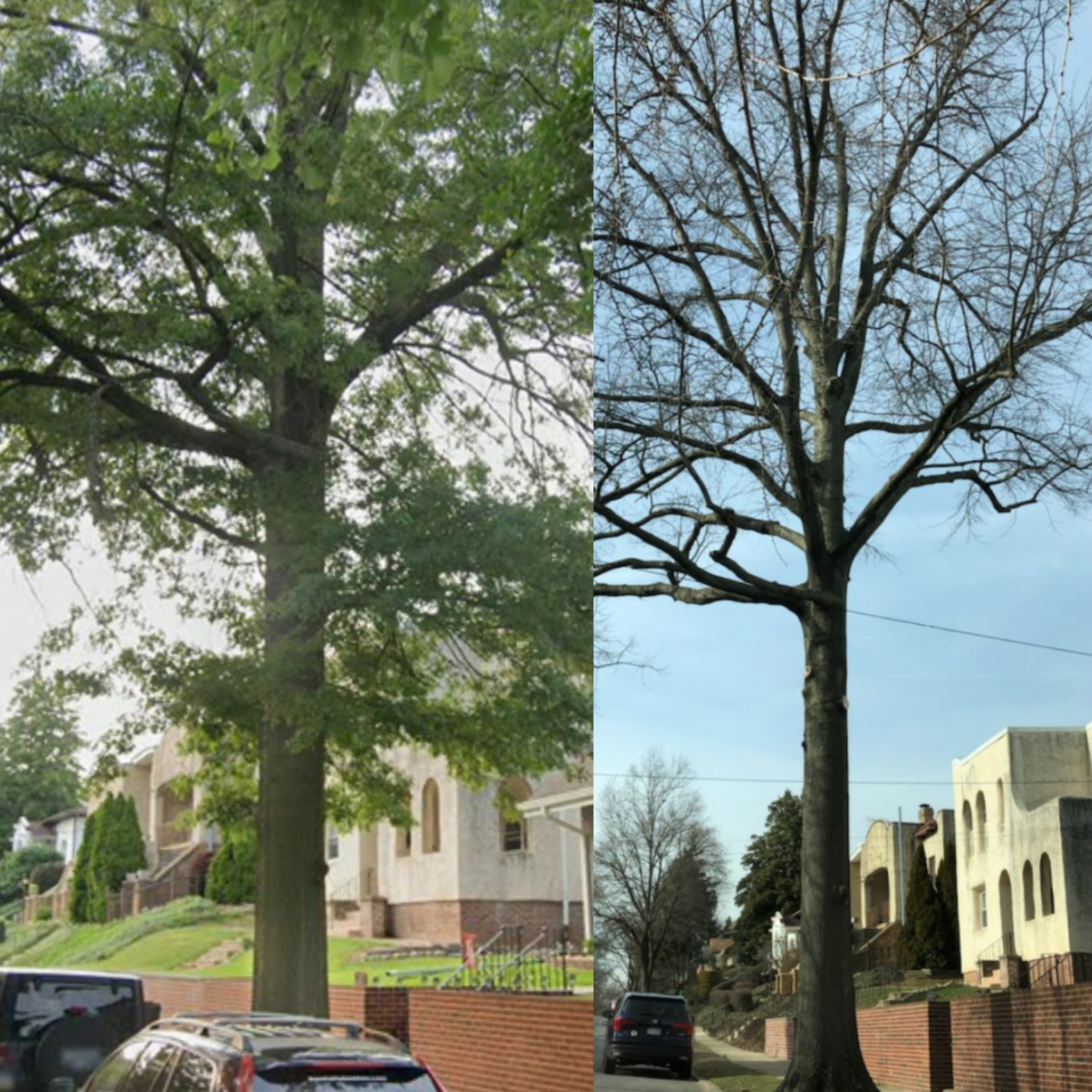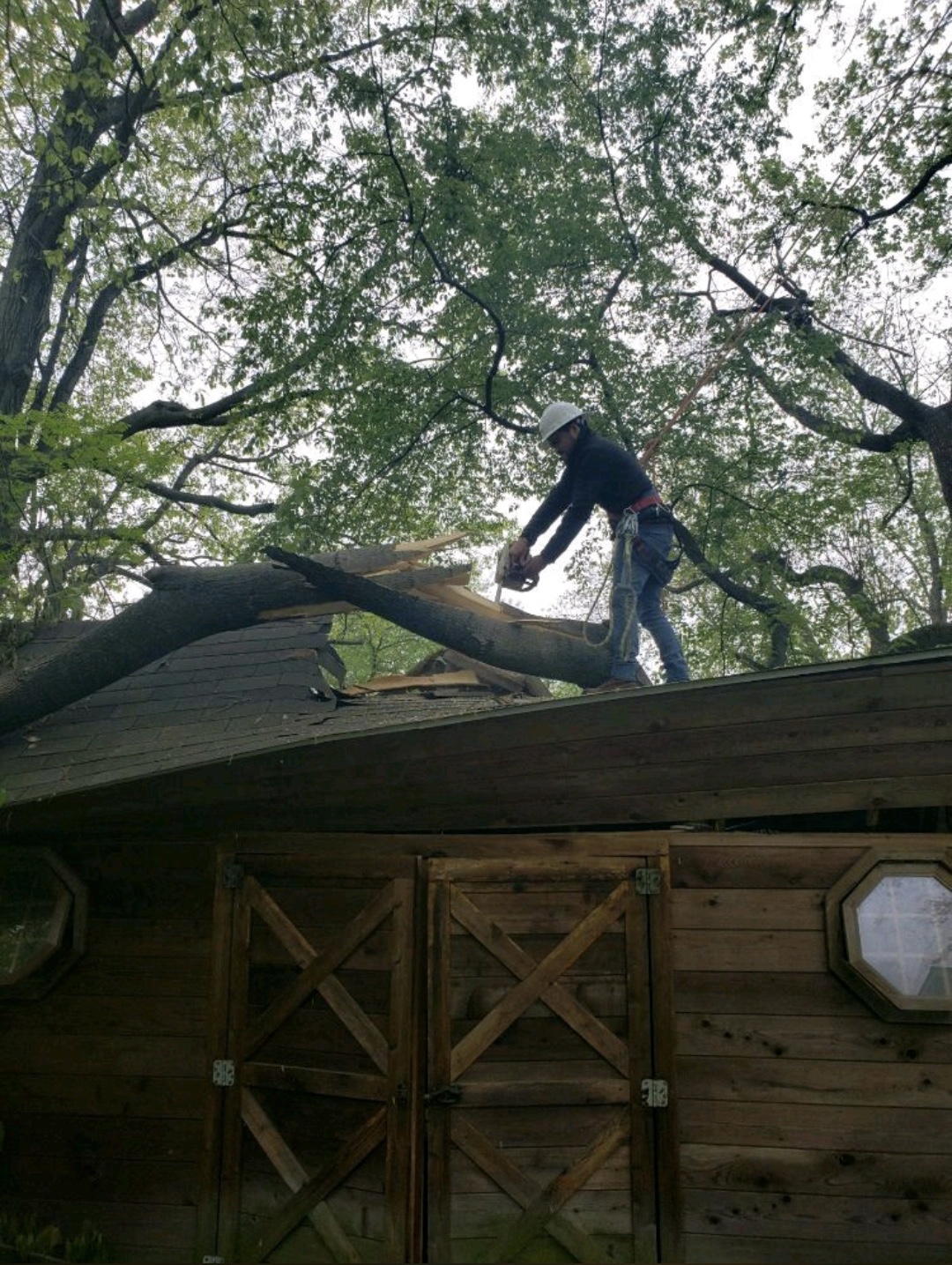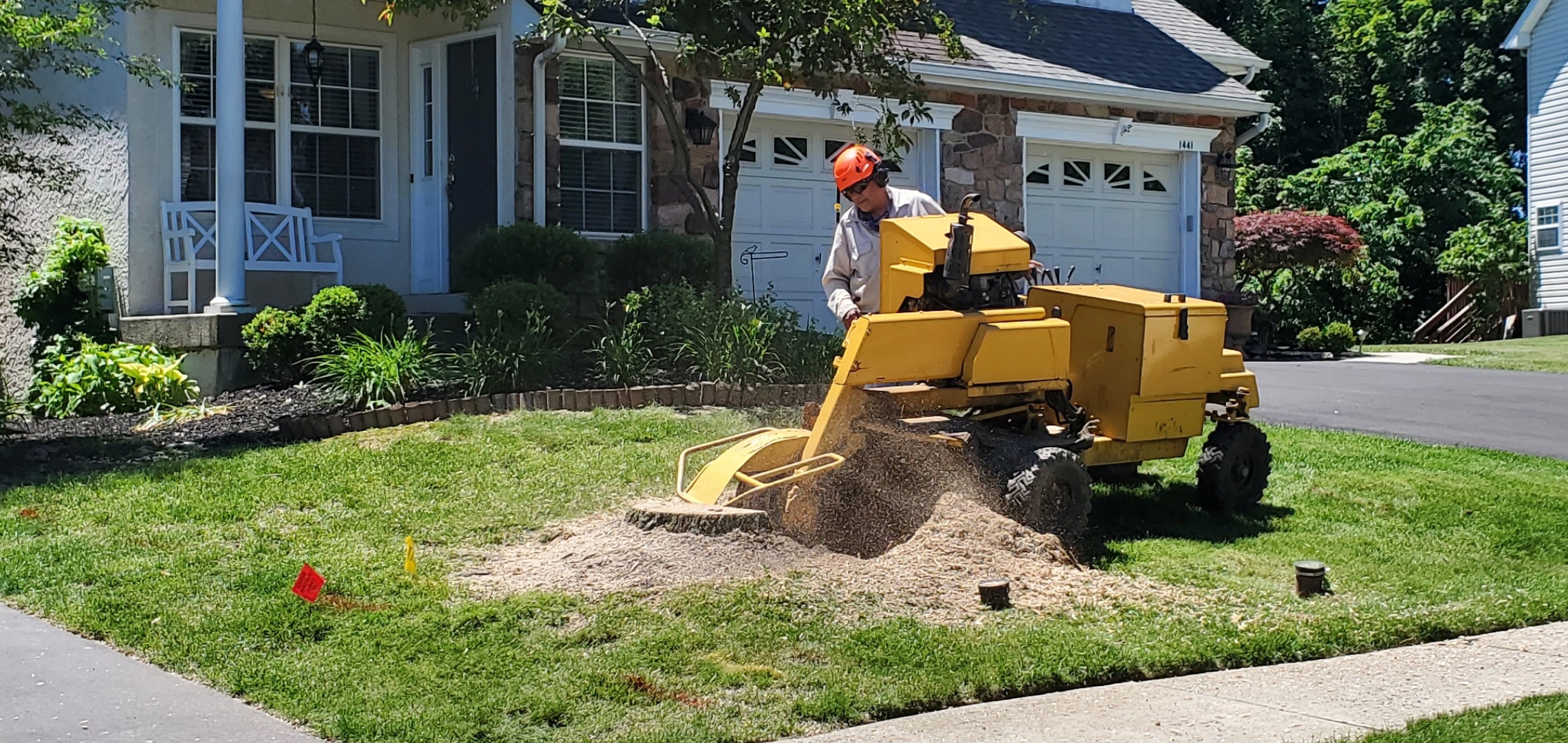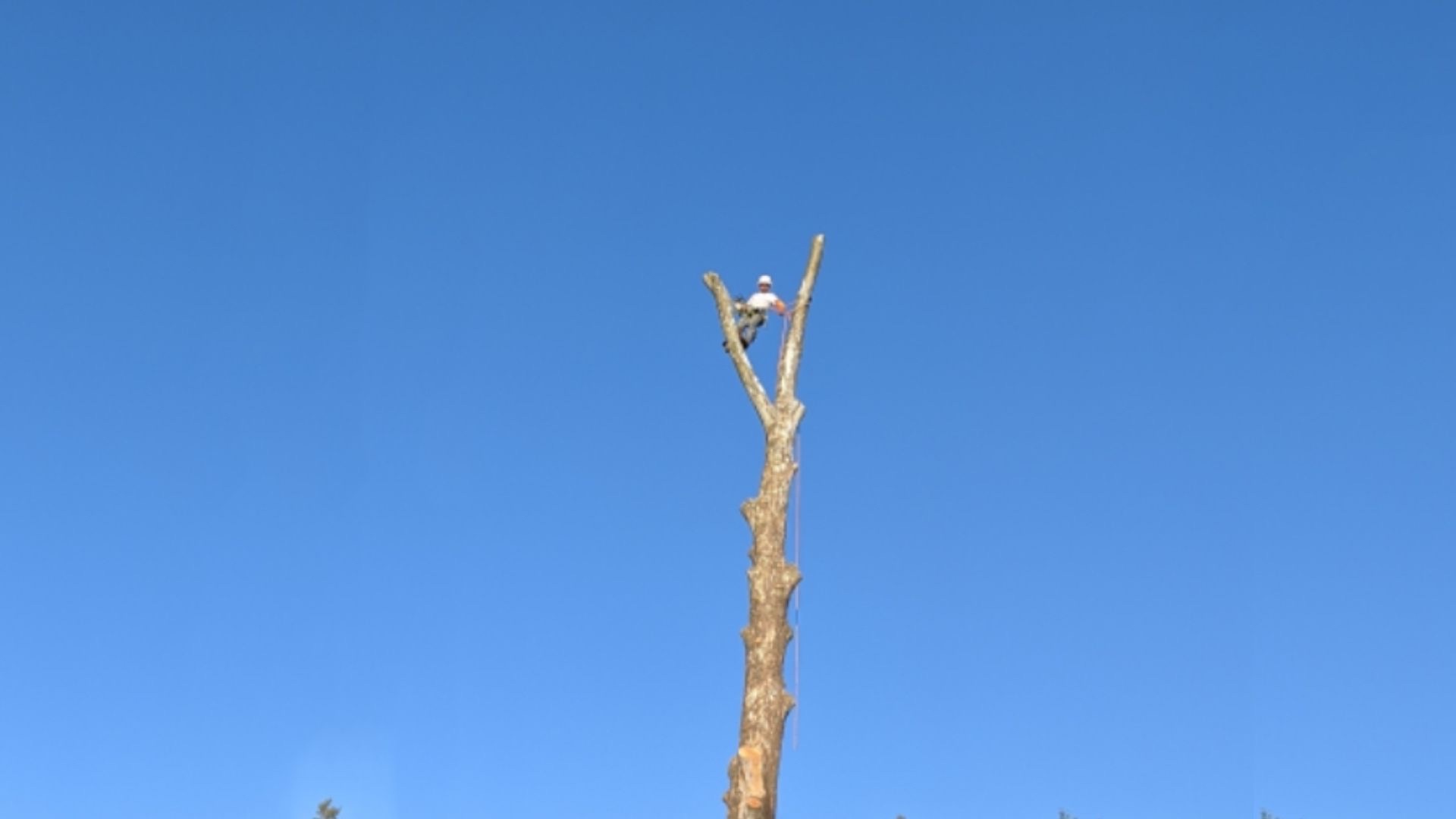Let’s start with why you want to or why you feel the need to prune a tree in the first place. The most common reasons typically include aesthetics, structure, and reducing risk. Typically, people prune to improve the appearance of the tree by reducing the length of fast-growing stems or unwanted growth. However, too many times trees are pruned only to maintain a desired shape or size to fit a location in the landscape. This can be the result of poor placement or because the wrong tree was selected for the intended space.
Sometimes pruning is necessary to remove dead or declining branches or those affected by insect damage or disease (Crown Cleaning). This helps defend against the spread of the pest and prevent further damage. Also, pruning can increase the vitality of trees to improve flowering and fruit production if done at the right time of the year taking into consideration the species of tree and when it blooms.
The most important reason to prune is to reduce the risk of tree failure, especially in the crown. This includes removing defective branches on a declining tree or branches damaged by a storm. Risk reduction and the improvement of tree stability are important pruning objectives. Begin this type of pruning when the tree is young and newly established. A larger, mature tree often requires professional arborists to remedy structural concerns and other issues affecting clearance, risk, and safety.
One pruning technique that we strongly discourage is topping. Topping is a form of poor pruning that can ruin the tree’s shape and health with excessive canopy removal and poor cuts. Topping is the unselective removal of branches between internodes and not where branches meet, leaving stubs and wounds which cannot heal properly. This provides the opportunity for disease and decay, creating serious problems for the tree. The tree responds by producing many sprouts that are weak and poorly attached and prone to failure to damage from wind, ice, and snow. Because of this weak attachment, the branches are likely to fail more easily and pose a higher risk of injury or damage around the tree.
Our Pruning Techniques:




